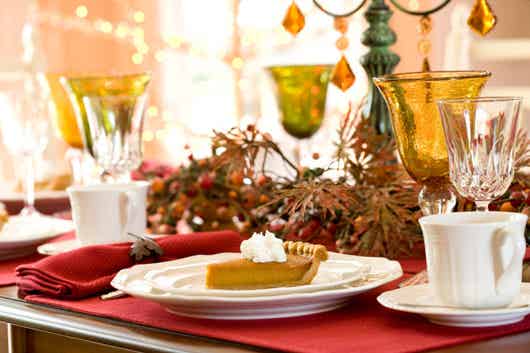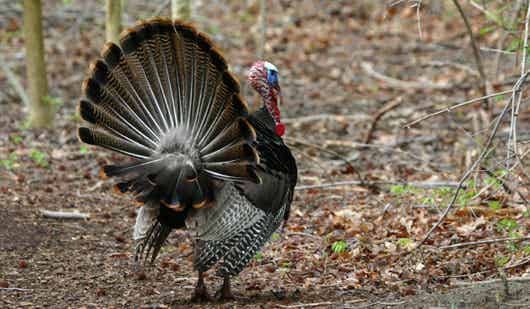The Thanksgiving holiday originally was held as a way to celebrate fruitful autumn harvests and to appease ancient gods. Prior to the establishment of formal religion, ancient farmers believed that their crops contained spirits that caused crops to grow, and to die. Many farmers believed these spirits would be released once the crops were harvested, so they had to be destroyed, less the gods took revenge on the farmers who harvested them. These harvest festivals were held by ancient Greeks, Romans, and Egyptians as a celebration of the defeat of these spirits.

The history of the American Thanksgiving is steeped in much folklore and legend. It is widely believed that the first Thanksgiving took place in 1621, which is documented in a letter written by Edward Winslow, an American Pilgrim leader who served as governor of Plymouth Colony in the early years. In his letter, Winslow describes a prosperous harvest year of corn, barley, and peas. He goes on to describe men sent to gather fowl, so they might "rejoice together after we had gathered the fruit of our labors" and then "at which time, amongst other recreations, we exercised our arms, many of the Indians coming amongst us...with some ninety men, whom for three days we entertained and feasted..."
Although there are not accurate accounts to support that this day of feasting and Thanksgiving was celebrated every year after the original "Thanksgiving", we know that there were typically days of thanksgiving celebrated throughout the colonies after the fall harvests.
By the mid 1800s, many states celebrated and observed a Thanksgiving holiday. By 1789, George Washington proclaimed a National Thanksgiving Day to be celebrated on the last Thursday in November, but not every president who Washington decreed that a specific day be honored as a holiday of thanks. It wasn't until 1863, when President Lincoln, at the urging of a magazine editor from Boston, Sarah Jsoepha Hale, proclaimed the last Thursday in November as the national day of Thanksgiving. Following that, every president declared a day of Thanksgiving each year, although the actual day of observance was changed throughout the years, many times to lengthen the Christmas shopping season. This tended to cause controversy, so finally in 1941, through a joint resolution in Congress, the fourth Thursday of November was declared a legal holiday, and this date of observance has stood since then.
Did you know? Thanksgiving Facts and Trivia

This Thanksgiving, what if you are not the one hosting the dinner, but rather attending a Thanksgiving feast? Although you are not obligated to bring a gift to your host, it is the holiday for which we give thanks, so brining a small gesture of your appreciation would certainly be considerate. We have compiled thoughtful (and useful) gift ideas to help you select a gift to present to your hosts.
Thanksgiving decorations add a creative touch and festive atmosphere to a holiday that already conjures ideas of family, friends, delicious food, and fun. Many people take advantage of this lively and social day of thanks by decorating their homes, inside and out, for the holiday season.
As you prepare for this Thanksgiving holiday, remember that the Thanksgiving table takes center stage, so you want to make it as impressive as possible. Now is the time to polish and showcase those silver candle holders, use the china gravy boat that has been in the family for generations, and to use the heirloom china! Adorning the table with seasonal decorations will only add to its beauty and décor. You can use a tablecloth or runner in autumn themed prints or rich, dark hues of reds, oranges, yellows and brown to bring out the natural colors of Fall. Accenting the tablecloth or runner with matching napkins and sparkling silverware will make it a sight to behold!
A centerpiece will add an attractive focus to the table - consider using a cornucopia centerpiece, traditionally filled with a variety of fresh fruits or autumn flowers like gerbera daisies, gladiolas, roses, and sunflowers. You could also make a centerpiece of dried fruits, pine cones, and greens to complete the Thanksgiving theme, or scatter fall leaves, wheat sprigs, clusters of berries and nuts in the center of the table for a more earthy and natural look. Another unique centerpiece idea is to hollow out a pumpkin, always abundant at this time of year, and fill that with fruits or fresh flowers.
Decorating more than just the dining table will add charm to your home and showcase your creative side this Thanksgiving. Mother Nature provides an abundance of inexpensive and inspiring array that you can use to beautify your home this holiday. Make a garland for your fireplace mantle of dried leaves, gourds and mini pumpkins, and pine cones, or you can drape the garland around the entrance to your home, or main doorways throughout the main living area. If you use candles in your home, consider purchasing seasonal colored and scented candles, and using berries or acorns around the base of the candle for an attractive, finishing touch. You can also display mini pumpkins as adornments to your staircase - place the pumpkins on alternating steps to create a festive look.
Mum plants are widely available this time of year, and come in an assortment of seasonal colors. Consider displaying mums potted in a wheelbarrow in your yard, placing them around the base of your mailbox, or even use them to create an eye catching look for your front steps. Remember, mums are hearty plants and can be replanted outside in your garden as the season comes to a close.
Decorating your home for the holiday season is a great way to make your home ready for Thanksgiving. Involve the whole family, and you can make this holiday that is all about family and togetherness, even more so this year.